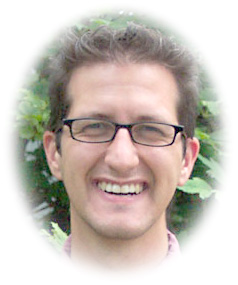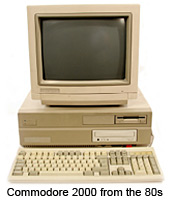|
 Jarrod Shapiro, DPM
Jarrod Shapiro, DPM
PRESENT New Docs Editor
Joined Mountain View
Medical & Surgical Associates
of Madras, Oregon July 2008
|
|
The Times Are Always Changing
The other day my wife and I bought a new radio for our son. It was one of those cheap combination players with a radio, CD player, and cassette. After setting up the radio in our son’s room, we were examining the device — actually, we were trying to figure out how to use it. Scratching our heads like two Neanderthals trying to figure out the wheel, my wife and I were attempting to open the cassette player, pushing buttons, twisting knobs, until we finally figured it out. We looked at each other and laughed at our own ridiculousness. As products of the modern technological age, we hadn’t used a cassette tape in so many years, we completely forgot how the device functioned. |
 |
This moment, sad and funny as it was, made me think about how rapidly times change. Think about your childhood for a moment. What was technology like when you were a kid? For me, a child of the late 1970's and '80's, I remember eight-tracks, LPs, and cassettes. I recall the first "desktop" computers (my brother owned a Commodore Vic 20). There was no such thing as the Internet. Email? Hah! Video games were the huge arcade boxes – Playstation and WII hadn’t been invented yet. In fact, we were excited to play Pong. People still used typewriters! How novel it seemed to cook eggs in a microwave oven (although even today they still come out like rubber). MTV in the early 1980’s actually played music!
I can only imagine what medicine must have been like back in the 1970’s. I’m sure our more senior colleagues are laughing at this "new doc", beginning his career without having experienced the monumental changes that have occurred in medicine. Think of the technological changes medicine has undergone in the last 30 or so years. Imaging technology such as ultrasound, CT, and MRI is mainstream and easily accessible in the United States. Xeroradiography? I’ve seen it in books. Tenograms? I actually did one as a student, but MRI has essentially replaced this technique. Antimicrobial therapy has exploded as the microbial arms race continues to escalate.
Podiatry’s scope of practice has also advanced due to the hard work of many of our elder statesmen and women. Just consider the surgical options available to us today versus 30 years ago. In fact, Austin and Leventen popularized the Austin bunionectomy in 1981 (Clin Orthop 1981: 157: 25-30). According to some I’ve spoken with, the McBride procedure was the most popular bunionectomy until it was supplanted by the Austin procedure in the 1980's. Our fixation techniques have advanced greatly in the past 30 years with increased utilization of creative internal fixation methods, absorbable technology, and external fixation. Just think of the revolution in biomechanics that began with Drs Root, Orien, and Weed in the 1970’s. Orthotic therapy has reached new levels of complexity and effectiveness with various new materials, methods, and theories.
Just look at the recent advancements that our biomechanics leaders have made to what had been stagnant, firmly held beliefs about clinical research, neutral position orientation, and cast correction. Look in any podiatry or biomechanics magazine to see the sheer number of advertisements. Biomechanics is big business!! The same is true for wound care. Clearly, this podiatric subspecialty has evolved over the past years where our profession is now on the forefront of comprehensive and increasingly effective therapy for the ever growing diabetic population.
Every once in a while it’s important to step back and view the broad picture and historical significance of our moment in time because it’s clear the times are changing. Who can guess what the next 30 years will bring? I’m looking forward to the answer to this question. For our elders, I’d like to invite your comments on the changes in podiatry in the last 30 years. What impressions and memories do you take away from your years in practice? For our new practitioners, what changes do you anticipate in your upcoming years in practice?
Write in and be part of the conversation. A few of your previous letters are posted below.
Best wishes!

Jarrod Shapiro, DPM
PRESENT New Docs Editor
[email protected]
A few more letters to the editor:
***Nonsurgical Care***
I would not have described non-surgical care as the Ugly Brother. I would have described that segment of our profession as the Unpopular But Necessary Rich Brother because in survey, study and questionnaires, one after another, we find that while surgery may be seductive, it is the non-surgical care that pays the bills!
As a newsletter editor for the American College of Foot and Ankle Orthopedics and Medicine, a few years ago I had the opportunity to interview an incoming APMA president who agreed that surgery doesn’t pay the bills. But he gave the best answer for why it remains the most alluring. I had asked him something along the lines of why we, as podiatrists, still revere our “surgeon” identities while the idea of being specialized “medical physicians” doesn’t seem to hold the same intrigue (although in the medical world we all admire the brilliance of the internist and the medical specialists.) I, personally, have always thought that the podiatrist beautifully combined the two worlds.
The reason? He made the great observation that the hospital OR suites were the only place where the majority of podiatrists (those who were not university, medical school or multi-specialty-affiliated) had an opportunity to interact on equal ground with their allopathic and osteopathic colleagues. It makes a great deal of sense.
—Kathleen Satterfield, DPM FACFAOM
Clinical Associate Professor
University of Texas Health Science Center San Antonio
[email protected]
Response:
Not only did your colleague make good sense with his comment, but YOU consistently make good sense with the comments that you make in this forum. I read your letters to the editor with great interest and anticipation. Thank you for your excellent contributions, Dr. Satterfield !
—Alan Sherman, DPM, CCMEP
CEO, PRESENT e-Learning Systems
[email protected]
***Vacations***
I like many have been guilty about not taking vacation time for my family and myself. Being active at many levels of the profession I find myself traveling way too much to enjoy the "balance" that has been mentioned previously.
If you have elite status for an airline or hotel chain from Podiatry trips you probable need an intervention. With that said, after an appropriate lag phase to get your new practice started, my advice is to schedule annual vacations for yourself and not to tie theses in with CMEs. The purpose of your vacation is to decompress, reduce stress, and reacquaint yourself with your
family. If you tie this in with a CME, you will be surrounded by your profession and the stresses that can bring. Embellishing peers who always make your practice seem like a failure, reminders of post-op complications at home that you see in a lecture, and the cost of equipment you plan to buy in the exhibit hall do nothing to meet the criteria of a "vacation". Even if you add the vacation on after the CME it will take longer to relax especially if GERD has kicked in. I understand that the cost of hitching makes sense but in the long run spend a little more for your sanity.
One final note. Set intervals or goals when to increase your vacation time. Perhaps from one week, to a week semi-annually, and ideally time off each quarter. Now I do not do any of this but as a senior member I can say "do as I say not as I do".
—Samuel Mendicino, DPM, FACFAS
Houston, TX
You should really make sure you find someone to cover for you…it doesn’t have to be a DPM. Find an Orthopod, general surgeon or someone because, vacation or not, you should have a back-up plan in case you need coverage.
—Mitch Barber, DPM
Laurel, MD
[email protected]
|